
How to find a Mumbai woman of your dream?
Many men are fond of women from India. This is not surprising since they are among the most beautiful women in the world. Many gentlemen would therefore like to get to know a pretty Indian woman. But apart from the good looks, what else is typical for Indian women? What characteristics do they have? What should be considered when flirting and what do they expect from men? These and other questions are answered below.
What is special in Mumbai brides' appearance?
Indian women do not always have it easy in their homeland, but they smile very often. The character of Indian women is mostly characterized by restraint and shyness. Nevertheless, they have great inner strength. The Indian women look breathtaking in the saris. This national dress is one of the most beautiful and elegant garments in the world. Indian women are also known for their culinary skills and excellent culinary skills.
- Typical appearance of the Indian women
The beauty of Indian women is hard to beat. There are numerous dream women in this country who, with their charm and special charisma, stimulate the fantasies of men. The skin color and hair are darker. This makes many Indian women true exotic beauties, who also often look very young. They like to look pretty and are beautifully decorated: with chains, bracelets and nose rings. They wrap a meter-long cloth in the most beautiful colors around their hips. The Indians also have a point on the forehead between the eyebrows that is worn every day from a traditional point of view and is considered a beauty spot, so to speak. But it's not just the external appeal that makes these women so unique. They also have traditional values that are important to many men.
- Woman with henna painting
Painting the body and hands and dyeing hair with henna is one of the traditions in India.
The henna powder, which is obtained from the dried leaves of henna (Lawsonia inermis), is used for artful painting of the body, hands or for coloring the beard or scalp. The henna plant grows in hot and dry places, for example in India, Sudan, Egypt and in most North African countries. The elaborate ornamental body painting (bodypainting) is called Mehndi or Mehendi and comes from northwest India, today's area of Pakistan.
This tradition in India is an important cultural custom, which is applied regardless of religion and in which hands, arms, feet, ankles and toes are artistically decorated. The art of mehndi has a long history that goes back to the 12th century in India. Even the pharaohs in ancient Egypt are said to have used henna around 5,000 years ago to decorate fingers and toes before mummification. The Prophet Mohammed is said to have colored his beard red with henna. Because of its healing properties, henna has also been used as a cosmetic. What is certain is that the painting with henna for cosmetic and ritual purposes has been known since ancient times and originated in Persia, from where it spread to India, the Arabian Peninsula and North Africa.
In India, the tradition of henna painting is used primarily for celebrations and weddings. Asian brides have been applying beautiful henna patterns to their hands, wrists and feet for hundreds of years. These mehndi patterns are much more complicated and elaborate than normal patterns. Traditionally, it is intended for the bride, but occasionally the groom receives a less than stylish painting. Because of the peculiarity of the day, that of the bride has to be applied much more elaborately. While the friends artistically paint the bride's hands with henna, they can still give her advice on her upcoming marriage and wedding night. A special tradition is that the groom has to search for his henna name on the wedding night. The bride does not have to do household chores until the henna has faded.
In India, even at festivals such as the henna painting is common for the Hindu New Year Diwali. The mehndi has thus become a stylish feature.
To make the henna powder, the lance-shaped leaves of the bush are harvested, dried and ground. The plant itself does not dye, so the coloring and the process first have to be started by fermentation, after which reddish-brown shades are created.
Henna is not only used as a body paint, as skin care to relieve rashes, but also as a hair dye. For coloring, which is also practiced by men in India, henna powder is mixed in warm water and left to stand for a while. The mass is then spread over the hair and has to take effect for at least 40 minutes. The henna mass is best mixed one day before application and protected from drying out in order to obtain the best coloring effect. The men who have henna on their hair report that the color of the scalp is pleasantly cooled. Nowadays, young men dye their hair red with henna to be "in" and older men cover the gray hair with the red color.
In our modern culture, the mehndi has experienced a kind of rebirth. At the latest since the late 1990s and the use of internationally known stars, the artistic painting has also become popular in German. The tattoo-like body ornament is now known as a henna tattoo and is considered a body cult on a natural basis. That is why this type of body art is considered a popular alternative to permanent tattoos. In contrast to real tattoos, the henna tattoo fades after only 2 to 3 weeks. Because here only the top layer of skin (epidermis) is colored and not the tissue under the skin. From a medical point of view, henna is harmless for body painting. From time to time, henna is added to the hair dye PPD (p-phenylenediamine) to achieve a black shade of the skin, which can trigger severe allergic reactions and lead to irreparable skin and liver damage. Therefore, doctors recommend to be careful when "mehndi artists" or cosmetics companies offer black-coloring henna tattoos and pastes. A sign that PPD is used is the assurance that the result will be permanently visible after half an hour or an hour. For mehndis with pure henna, however, you have to wait at least 6 to 8 hours.
So we research Indian personals for dating and marriage. Indian women are quite simply different: Indian families differ considerably in their religion and caste system, in almost every aspect, from the European way of life. Lasting family happiness is rarely possible in India with sheer beauty and a touch of the exotic. Therefore, place value on the origin of your Indian wife: Indian tradition and culture mix with the western way of life in big cities like Mumnai or Delhi. In addition to exoticism, beauty, grace and femininity, a modern Indian woman from an open-minded Indian family in the big cities of India has other qualities that the modern man from Europe appreciates and often misses among local women: loyalty, family spirit, modesty, hard work and down-to-earthness contribute to family happiness and are brought up to Indian women.
Indians, like any other woman, want to find a reliable and loving man whom they love and respect, whom they trust and with whom they want to share a happy future for their children together. Of course, an Indian woman is looking for a man to marry and western men are known in India as loving and reliable husbands. Indian women inspire us men with their natural beauty and exotic appearance: black hair, almond-shaped dark eyes, their delicate, delicate figure, a charm in the smile and the reserved nature of Indian women - Indians win European men's hearts with ease and grace. An Indian woman gives a lot to be attractive and desirable for her husband. For Indian women, the family clearly comes first. She will be a loyal, loving, passionate and understanding partner.
Western man marries Indian woman! No longer a scandal, nothing extraordinary. What do you think, where do the Indian women come from, who run Asian shops and Indian restaurants or offer Thai massages? Right: You were married by a western man! In our cities, Indian women live with their German husband and family on almost every corner. Where does it come from? Quite simply: For Indian women, loyalty, tenderness, modesty and honesty are the most important things for a harmonious marriage and a happy family. Do you want to marry an endearing Indian woman? With honest intentions you have the very best opportunity to get to know and marry an innocent and loyal Indian catalog woman through a dating agency in order to enter into a happy and lasting relationship with her.
Indian women are among the most beautiful women in the world. At least that's what many single men claim, who are looking for the woman of their life and definitely want to get to know a pretty Indian woman. But apart from the often-mentioned beauty, what is typical for Indian women? What mentality do you have and what do you expect from a man?
Basically, of course, every Indian is a unique being with individual needs, wishes, preferences, dreams and goals. Shoving all Indians together would be far from appropriate - all the less because India is an extremely heterogeneous country with many different religious and cultural currents. Nevertheless, there are also properties that can be considered quite typical for Indian women because many Indian women have them. Otherwise, a term like "mentality" would appear in a completely meaningless light.
So what are the typical characteristics of Indian women? For example, women from India are considered very family-oriented. Many women come to terms with the fact that Indian society is still very conservative and patriarchal and try to make the most of their almost predetermined role as housewives and wives. They take care of the household and children and are known for being able to cook extremely well. Most women from India can handle well not only with a wooden spoon, but also with the money entrusted to them.
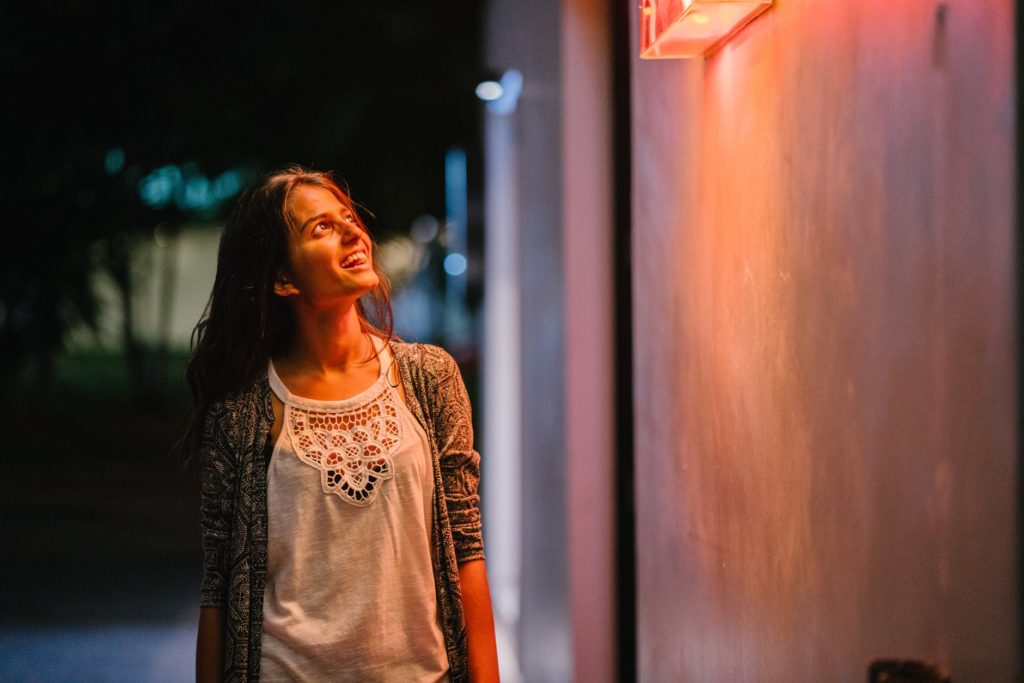
Even if Indian women do not always have it easy in their homeland, you can often see them smiling mildly. Indian women are extremely tough and cannot be beaten so quickly. No matter how much male violence, oppression, abuse and rape there is in India, Indian women are very strong - above all in accepting their lives as they are. This inner strength is not always immediately apparent, since most Indian women are reserved, shy and distant.
While women in Muslim Muslim regions of India are less equal and emancipated, the image and role of an Indian Hindu woman depends on the caste into which she is born. Not every woman in India is faced with oppression. Pujari women (priests), for example, are relatively highly regarded. Many Indian women also work as independent managing directors and entrepreneurs.
To claim that all Indians are oppressed women would therefore be completely inappropriate, since this thesis is simply too superficial and undifferentiated. No general statement can be made about the prevailing image of women in India, even though oppression, abuse and rape are as big as sad topics in India. The reality in everyday life in India is much more complex. The life of an Indian woman depends heavily on her religion or caste.
In the meantime there are also women in India who are by no means shy, reserved and humble, as one is used to from most Indian women. Some women are very western-oriented, don't care about religious rituals, traditions and customs and have no problem with premarital relationships and love affairs. Sexual self-determination is still the exception in India and many families are still very concerned about protecting the honor of female family members. But the understanding of roles in India seems to be changing gradually.
Maybe your friend and middleman has to go to the Indian for dinner and ask a few times. Don't be discouraged. Haven't you already noticed that Asians do everything for the family and for a good friend. He doesn't do it primarily for you, but also for his Indian friends and his Indian family. Maybe for his Indian cousin or the sister of a good Indian friend. In a country with tradition like India, friendship ties count a lot more than we can imagine.
It is of course not everyone's cup of tea to play the "match". It can therefore be more promising to trust a dating agency that will take over the business of establishing contacts with Indian women in your country for you.
What can impress the man in Indian woman's character?
India is known for having oppression, male violence, abuse and rape. Nevertheless, the Indian women are very strong and resilient. You have learned to accept your life as it is. Most Indian women are still shy, reserved and distant. In some scriptures it is written that the being, the woman tends to be evil and must therefore be controlled by the man. In some regions of India, women are still married to parents.
Most Indian women are very family-oriented and expect their husband to take good care of their wife and family. He should be a good provider and protector. Characteristics that an Indian appreciates in men are self-confidence, sovereignty, courage, personality, mental strength and emotional stability. Indians wish to be treated well, with respect and love.
It rarely happens that an Indian woman takes the first step to meet a man. In addition, public touches or tenderness are not appropriate. In order for the Indians to feel the feeling of love, it is important that the woman is given a lot of attention. As a gift, you can bring a beautiful bright flower to a date. In India, however, it is very difficult to make casual contact with foreign women.
Forehead sign: "Bindi"
Another tradition in India is the painting of a tika, bindi (bindu = drop, dot), also called tilaka or in the vernacular tila. This is a painted point between the eyebrows or a piece of jewelry stuck on at this point. It is located in the middle of the forehead between the eyebrows and originally symbolizes the "third eye", which has the ability to look "inside", that is, to see things that are outside of normal perceptions. The swab with red powder paint is therefore a blessing after a Hindu ceremony has ended.
Traditionally, the red dot is the sign of the married woman. Nowadays, bindis in India are also worn by unmarried women, even children. For married women, it is not decisive whether the dot is worn in the classic red and round or colored ornamental as a sticker. Only when women become widows do they waive the bindi. Unmarried people can wear a bindi as a decoration or a blessing. Even Indian Muslim women today go with this fashionable point, which would have been unthinkable a few years ago.
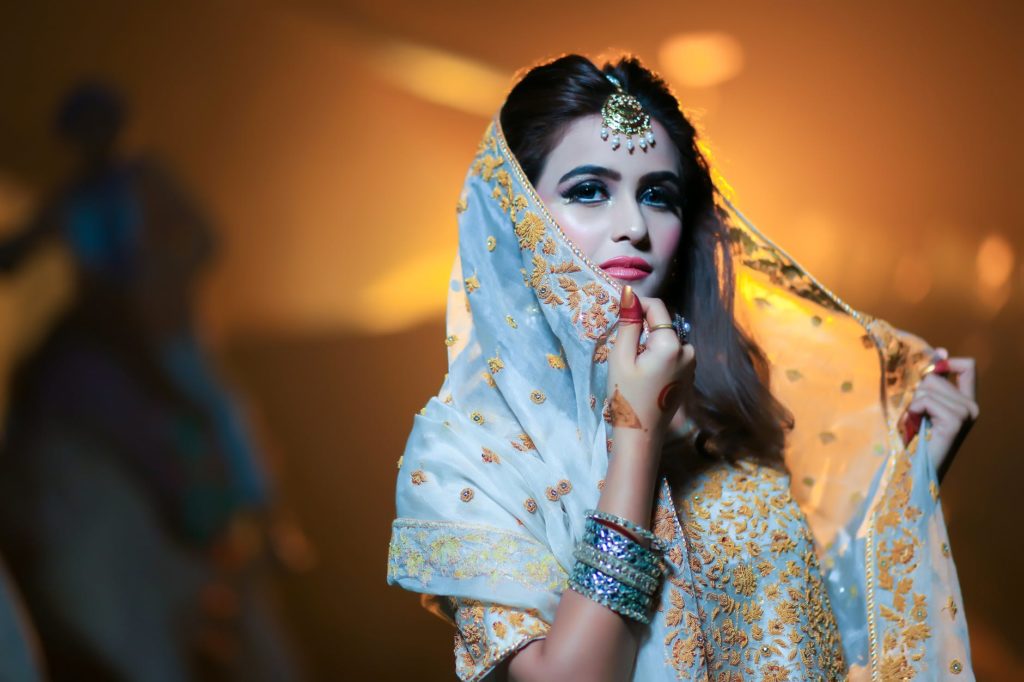
Traditional dots are applied with red powder paint (Sindur or Kumkum). Today, reusable, stick-on jewelry bindings are common.
The wedding bindi has a special meaning. This consists of a series of small bindis along the eyebrows and is said to bring happiness to the bride at her wedding reception.
Tilaka (sign, marker) or colloquially Tika is the name given to the various blessings that Hindus wear on their foreheads. A tilaka or tika can be a red dot, but also an elongated, horizontal or vertical line. It is often black from a soot-butter mixture, light from ash or sandal paste. Women, men and children are blessed with it.
Some tilakas indicate religious affiliation: devotees of Shiva, Vishnu worshipers, those who worship God's female form, Shakti, prefer the red forehead.
The difference between the tilaka or tika as a blessing to the feminine variation, the bindi, is fluid. Despite a widespread assumption in Europe, none of these foreheads is a box sign.
Mumbai brides: Early marriages
The women from India are considered very family-oriented and try to make the best of their role as a wife and housewife. Most of the time, they do everything to maintain their relationships. They are devoted to the man, the household and the children. The husband and family come first in many Indian women. It is their greatest concern that they are doing well. They also cook excellently. The Indian women who grew up and were raised in this country rarely feel the urge to learn a profession. Therefore, they primarily worry about men and children. They know how to handle the money that is entrusted to them. It is often very attractive for the Indian women to marry a well-off man in order to live with him in secure conditions and to start a family. However, a large part of marriages in India are arranged by parents.
Mumbai brides: Who is she looking for?

Since most women from India are very family-oriented, they expect a man to take good care of his wife and children. Most Indians want a husband who is suitable as a protector and provider. Self-confidence, courage, sovereignty, mental strength, emotional stability and personality are characteristics that Indian women appreciate in a man. Of course, Indian women also long to be treated well and respectfully. Which woman would not be happy about a man who respects her and who can give her support and security?




Tips for a relationship with a woman from India
If you want to live and live with an Indian woman, you should be prepared for the fact that everyday misunderstandings, discrepancies and differences of opinion can arise due to the different cultural characteristics. These misunderstandings need to be cleared up and eliminated. Openness, honesty, respect, understanding and patience are particularly important here. If you take this to heart, you will be able to solve difficult situations quickly and create more harmony in the mutual relationship.
Respect, understanding and sincerity are the most important pillars of any relationship. Indian women in particular are longing for a partner who treats them with respect and love, as they are often confronted with oppression, male violence and excessive patriarchalism in their homeland. And unfortunately still will.
The beauty of Indian women is hard to beat. They are dream women to marry, but it is also difficult to get to know Indian women in other countries. There are really many Indian women in western countries, with their charm, stimulate the fantasies of men.
- Last updated: 26 Dec 2019
- Author: AAbrides

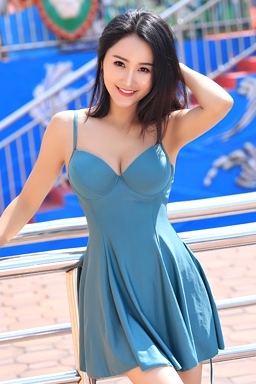
 4.7
4.7 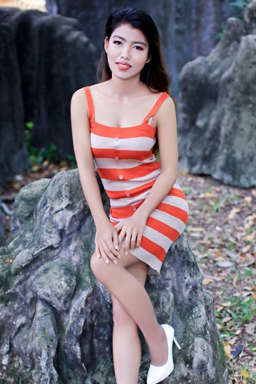
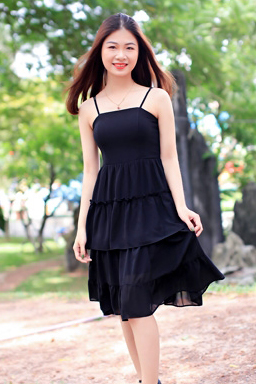






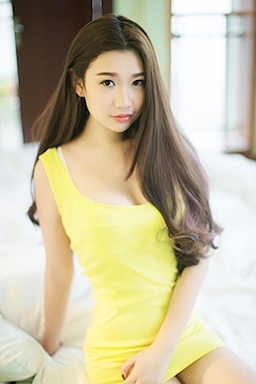







 4.7
4.7 

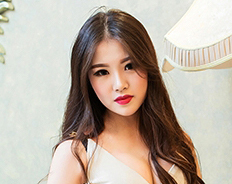

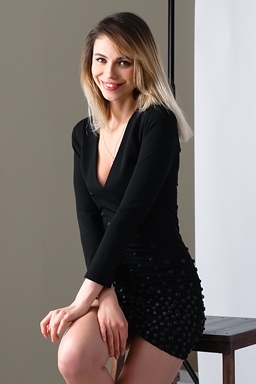



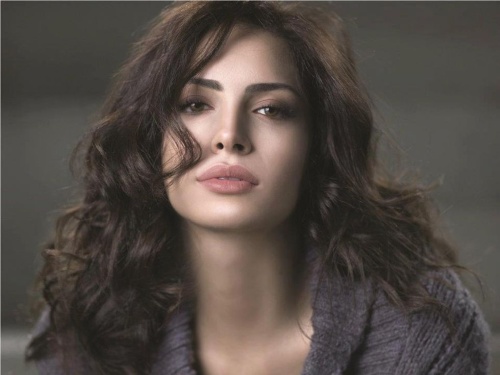
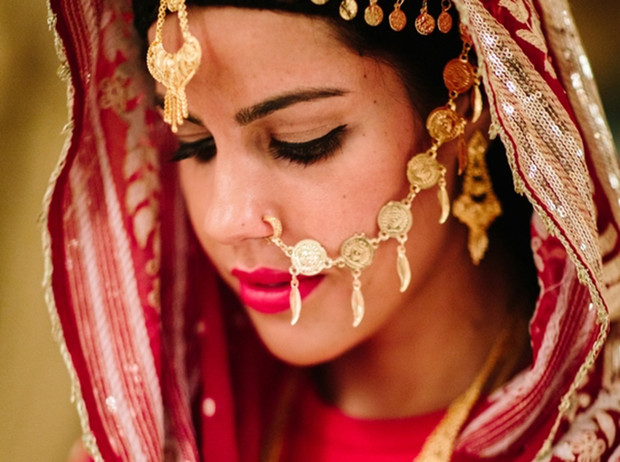










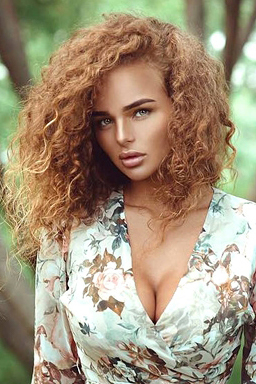
 4.7
4.7